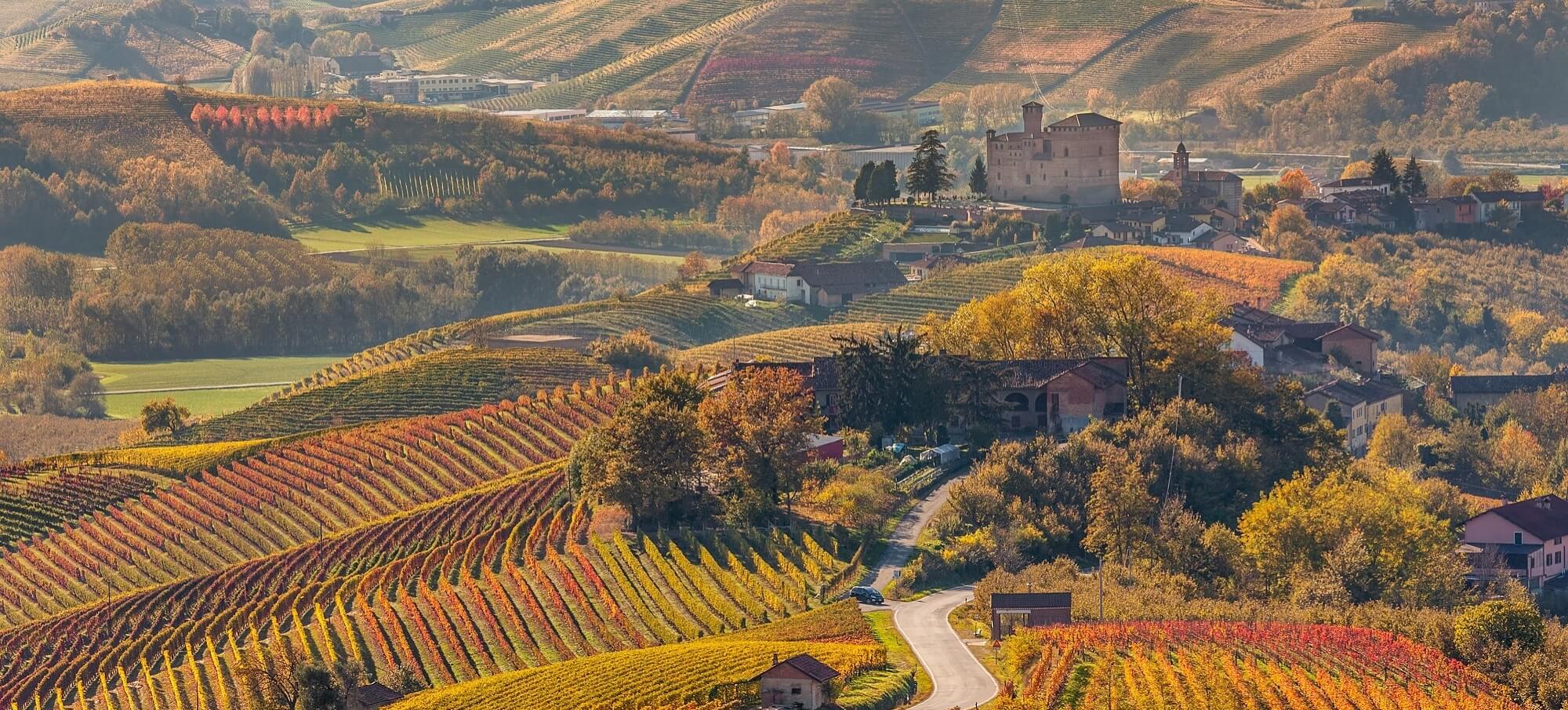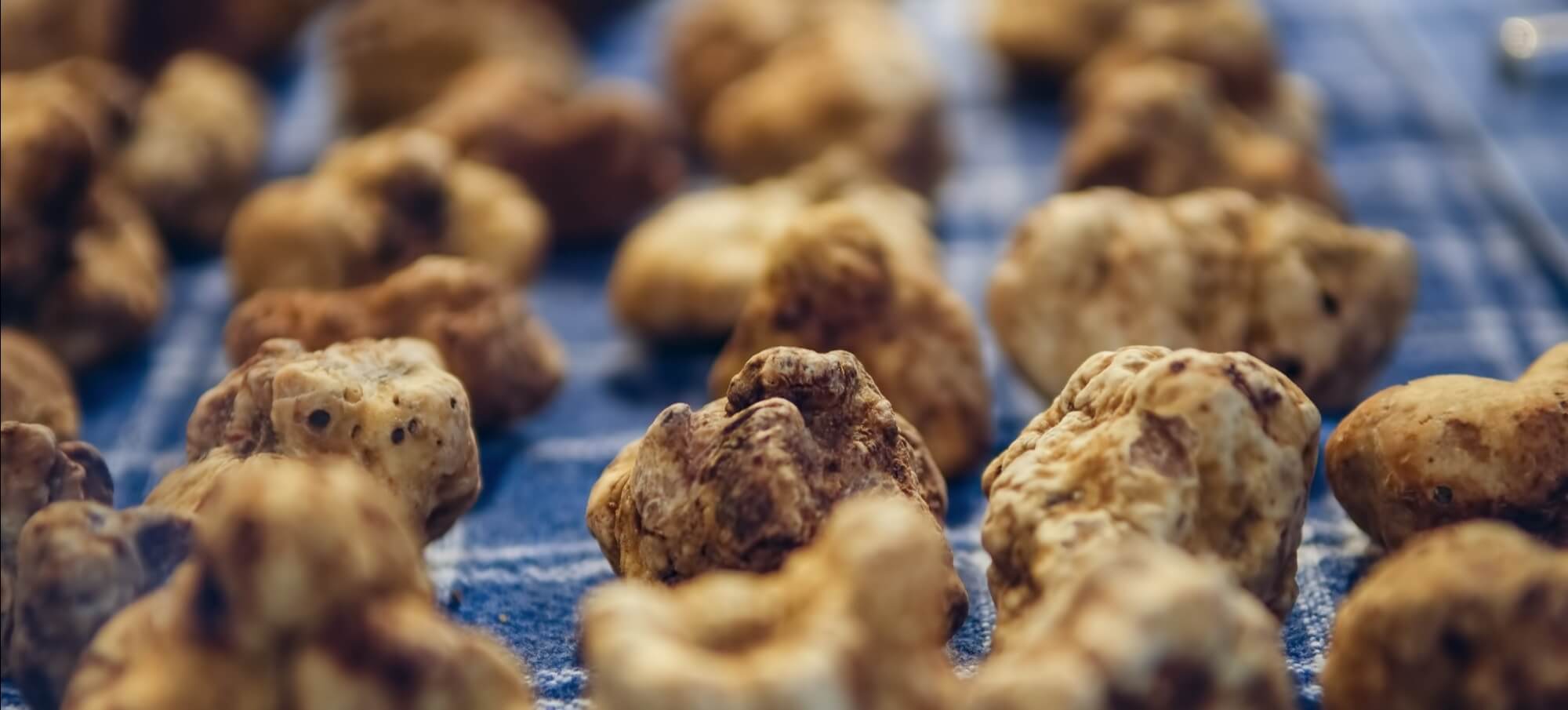Piedmont – a sweet discovery
Exquisite taste and swoony vistas

In such a resourceful country as Italy, you are never far from a dream. By the sea, by the lake, in the mountains or the hills, diverse, ever-changing, splendid views enrich every traveller’s soul, especially those in search of original, authentic experiences. We have hand-picked the most exciting locations in a region that excels for its cultural heritage, food and wine offer, not to mention its ethereal landscapes and have come to Piedmont, one of the most elegant districts in the Bel Paese.
Home to regal palazzi and some of the finest wine production in the peninsula, its delicious food will conquer you, as well as truly amazing museums - the second largest Egyptian museum in the world is based in Turin, and that’s only the beginning. Come to its gentle hilly southern provinces to enjoy an enduring love affair with nothing but exquisite taste and swoony vistas.
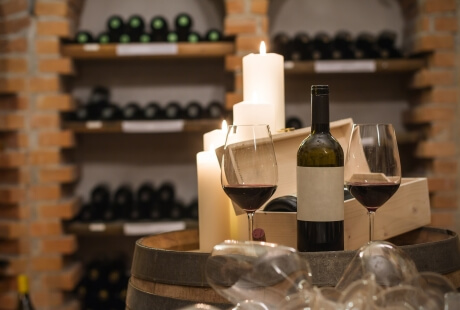
1. A flying winemaker… perhaps
In an improvised “battle of the giants”, who would win on the Italian soil when it comes to the best wine around? Even the most talented and experienced flying winemaker would alas tell you that this competition is pointless, every corner of Italy producing simply superb wine. It cannot be denied, however, that Piedmont ranks supremely high on every connoisseur’s list – wine growing dating back to ancient Rome, the culture and history of wine being written on the sunny slopes that dot the Piedmontese scenery.
Where to start then? From Gattinara to Erbaluce, Gavi to Fara, rows of vineyards colour the background, but it’s the southern counties that produce Barolo, Asti, Barbaresco and Dogliani that are perhaps best known. Let’s embark on a discovery trip along the shores of divine taste.

2. Finding your way into wine
If you try and trace the identity of a nation via its wine production, then the hills around UNESCO protected Langhe-Roero and Monferrato reveal a full-bodied taste and a distinct scent. A wine route is your ideal companion and you may start with the Strada del Vino Monferrato Astigiano: successfully merging tradition with innovation, Piedmontese wine production in the Monferrato probably reaches its apex, offering both national and international wine varieties that all excel.
The Strada del Vino Astesana lies at the core of it all: 30% of the regional wine production stems from here, with an astonishing variety that ranges from Spumante to dry white wines, light red types and more structured ones, thanks to ageing, but also aromatic white and red wines, with spirits to finish it all off. The area includes vineyards that produce Nizza DOCG, Brachetto DOCG and Canelli DOCG among others, Barbera d’Asti being the most celebrated variety

3. What’s in a name? Barolo
Exploring the small hamlet of world-famous Barolo and its surroundings, time is sweet on your hands: the gentle caress displayed by neat rows of Nebbiolo grapes embraces you as you meander through the area. Whether it’s an ancient castle, a renowned wine estate or a storybook hamlet, you’ll find yourself wondering why you haven’t chanced upon this treasured marvel before. Sometimes called “the king of wines”, Barolo exudes complex and powerful aromas, its 100% Nebbiolo grapes a vibrant combination of liquorice and dried rose. Given its high tannin content, the Disciplinare rules that Barolo wine must be aged for at least 38 months, while the Riserva requires 62 months. Enjoy a tasting while perusing along the pretty villages of Barolo and surrounding La Morra, Monforte d’Alba or Serralunga d’Alba, indulging in a delightful meal while sipping on a treasure.
And if you need a pause from your decadent pantagruelian experience, hop into WiMu, the wine museum located in Barolo. Perhaps the most challenging museum example you could think of, its task is not merely to explore wine production and the soil that yields this potent marvel (marine sediments in Piedmont? That’s right!), but it is considered a place “to talk about our relationship with wine”. An aim achieved via guided tours, interactive installations, a wine-wanderer game (for families as well), along with three floors packed with interesting displays and, of course, blissful wine tastings that are pure pleasure.

4. Hail the truffle season!
Every Italian region excels in several peculiarities, driven by its past, climate and morphology, mostly blessed by natural resources, but food, well, it’s a feast wherever you land. Piedmont is certainly lucky, yielding some extraordinary products, such as prized truffles. Cherished and treasured all around the world, truffles are considered like “gastronomic gold”: why are they so mystically precious?
Let’s start with the basics: truffles are a type of mushroom – of the Ascomycota type – they grow and live in the earth, hence away from light. There exist several types of truffles, the most famous being Tuber Magnatum (white truffles), Tuber Melanosporum (fine black truffles) and Tuber Uncinatum (hooked truffle), but there are also other types like the summer black truffle (scorzone) and summer white truffle (called bianchetto).
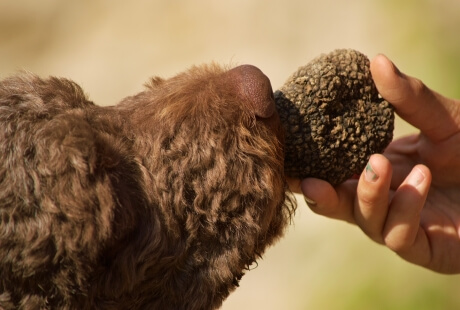
5. A taste for - not – all seasons
The availability of truffles may vary depending on the year – wetter seasons may yield more types than drier, hotter ones, and you cannot stumble upon a truffle, as you would with a humbler mushroom, but what is certain is that truffles can only be picked at certain times of the year, strict regulations being in place.
From the end of September to the end of January you can pick white truffles, from the end of September to the end of December it’s hooked black truffles time and December to mid March for fine black varieties. You will need to resort to expensively trained dogs and a certified ricercatore to try your luck – there exist 4,000 of them in Italy. Or you may go on an organised truffle hunt.
Once they are extracted – rigorously by hand – truffles only last for a short period before they become inedible – hence their astonishing prices. The other key factor is that white truffles cannot be grown – while the darker variety has seen some experimentations in this sense, sometimes taking as long as eleven years to reach a minimum degree of availability. The rarity of truffles contributed to their astounding price, so why not have a go at a speciality? The powerful intensity of their taste will be revealed in full.
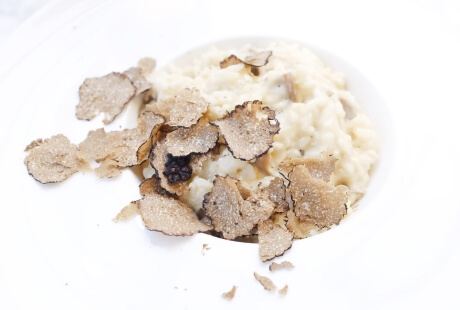
6. It all starts with an idea… try a truffle recipe
As with most Italian dishes, less is more, as they say: given the utmost quality of raw ingredients, Italian cuisine need not be complicated to make you reach for a delicious second helping. Cooking with gusto is all Italians have ever known and pass this simple advice across generations.
Thinking of cooking truffles? Try and purchase truffles that are still soil-rich and certainly not fully washed or prepared. Remember to clean your truffles the day you want to eat them and do not leave them too long in the fridge or they’ll lose their distinct aroma. Do not use water to rinse the dirt off white truffles, but a soft small brush (ideally a toothbrush) and a soft kitchen paintbrush. White truffles are more delicate than dark truffles, so you’ll need to stick to some simple rules to obtain the best in taste and sensations.
You could do almost anything with truffles, from a humble panino to an appetizing bruschetta, stuffed tomatoes (pomodori tartufati) or the most famous lasagna con tartufo. We’ll focus on a classic here:
Risotto al tartufo bianco.
Ingredients
Serves 4
· 600 gr Carnaroli rice
· 1,5 chicken or beef stock
· 100 gr butter
· 20 gr. white truffles
· 100 gr Parmesan cheese
· oil, salt and pepper to season
Heat a little olive oil in a frying pan, wait until it’s really hot and add the rice. Leave the rice to toast for no longer than two minutes at medium-high heat. Add the stock little by little: as soon as it dries, add more stock. Repeat until the rice is fully cooked – it should not take longer than 20 minutes.
Once the rice is cooked, turn off the heat and add the butter. Let the rice and butter mix fully, using a wooden ladle to ease this operation. Stir until it’s all smoothly blended. Add the Parmesan cheese and pepper according to taste.
Put the rice in four dishes and reach for your truffle. Cut it in flakes and place them on the rice. It’s all ready to be enjoyed!
Best served with: Barolo wine (what else?)
Where to stay:
Nordelaia Boutique Hotel
All contents, photos and texts are subject to copyright. They are only authorised on my website and social media. Ideas can be a source of inspiration, but any unauthorised use of images and texts is strictly forbidden. All rights reserved.
